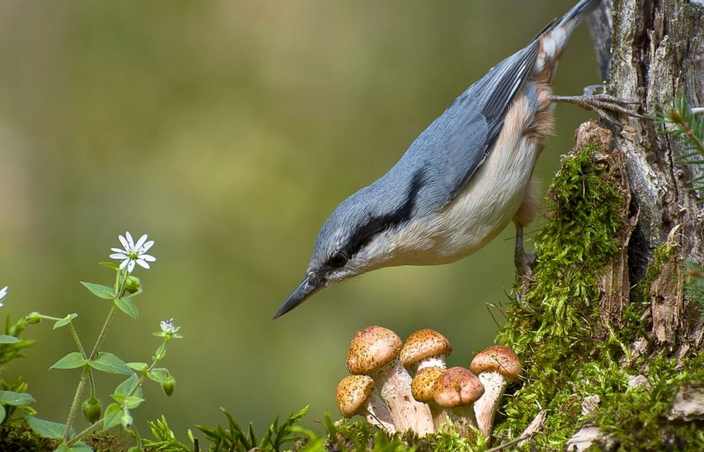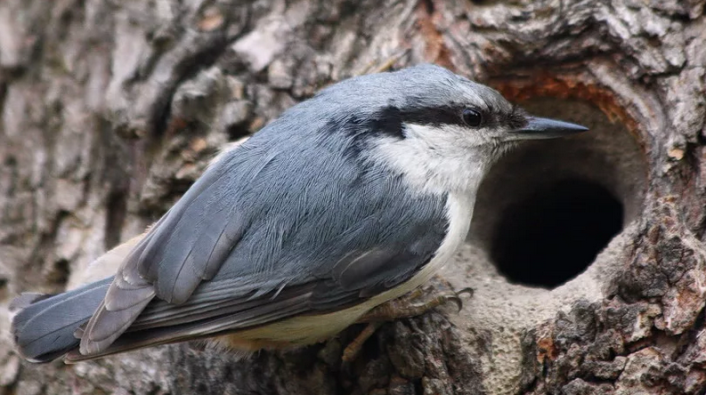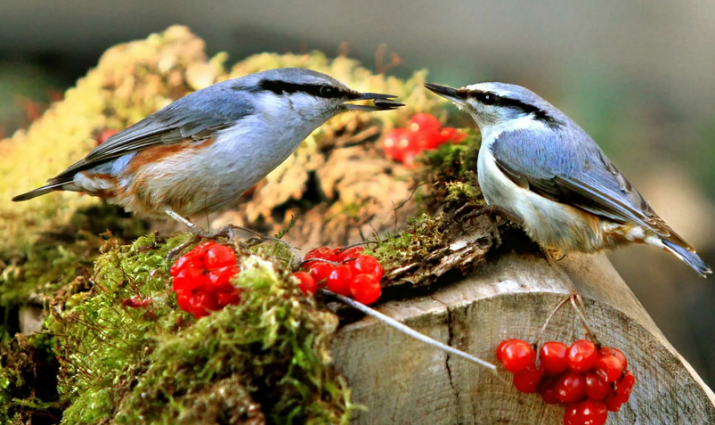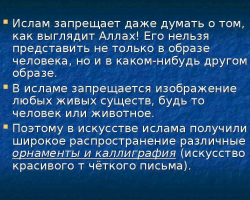Crazy - the bird is beautiful, special, with interesting singing and voice.
Content
- The Blue Blue Slood is ordinary - a description: why did they call it what it looks like, a photo close -up in winter, in the summer
- Which bird is crawling: migratory or not, wintering or not?
- Types of content
- Couple the bird: what does it eat?
- Range and habitat
- The nature of behavior and lifestyle
- How do the cuts propagate and what offspring give?
- Is it possible to contain content at home?
- Interesting facts about the lift
- Couplement: similar birds, what wintering - stork, haircut, swallow?
- The bird is similar to the tops, but large: name
- Crazy: singing, bird's voice, sound, video
- Video: creeping ordinary
Planet Earth is rich in species variety of animals and plants. Representatives of the flora and fauna are closely interconnected. Birds are of no small importance in this natural chain.
Read on our website another article on the topic: "Life expectancy of different animals". You will learn a lot of interesting things about birds, reptiles, rodents, fish and mollusks.
There is a huge species variety of birds. Some live only in a particular territory, others are common around the world. An interesting bird with a wide habitat - nuthatch. In this article we will tell you what kind of bird it is - migratory or not, what is its lifestyle, what it eats, etc. Read further.
The Blue Blue Slood is ordinary - a description: why did they call it what it looks like, a photo close -up in winter, in the summer
The bird is blue Ordinary is a representative of the Relznev family. Belongs to the detachment of sparrows. The bird has such a name because it cleverly crawls through trees. In Latin, these birds are called Sitta.
Here is a close -up photo in winter and summer:


The bird has other names:
- "Coachman". Because of the ability to whistle loudly. And this whistle looks like how the horses drove whistles.
- "The top". The bird also has the ability to spin around itself.
In different countries, the content is called differently. The names mainly come from the physiological characteristics of the bird or from its skills. How does this bird look like? The following characteristics are distinguished:

- The structure of the body is dense.
- Large head. The neck is not long.
- The beak is straight. Very sharp and strong. This structure is necessary to hammer the bark of trees.
- Wings of small length, rounded.
- Tail in the shape of a wedge.
- The paws are short. The claws are long, bent down.
- A cap of dark feathers frames the head. Some representatives in the eye area have a dark strip called a “mask”.
- The length can be from 10.5 to 19.5 centimeters.
- Weight ranges from 20 to 47 grams.
In young individuals, the appearance has a resemblance to adult representatives. However, young spheres are not so bright.
Which bird is crawling: migratory or not, wintering or not?
The tops are among birds that do not fly away for the winter. But they are considered migratory. The slide can fly away from the territory of its habitat only in order to get food for yourself. So, some types of these birds that settle in the forests of Siberia can migrate in the warmer regions of Russia in the winter if they do not have enough food.
In cities, the tops are found in the autumn and spring periods. Most often, birds fly to gardens and parks, where people feed them.
Types of content
There is no single system for dividing the top into species categories. Experts take various approaches as a basis. Based on different criteria, from 21 to 28 species are distinguished.
The most famous are:
- Ordinary (Eurasian). The tops of this species are the most. It is found in Eurasia, North America, Africa. The habitat determines the color of the abdomen. He varies from white to chestnut-red. Representatives of this species settle in old mixed and coniferous forests.
- Corsican. The color of feathers is gray-blue with white elements. Above the eyes you can see an eyebrow-fool of a whitish hue. It lives on the island of Corsica.
- Black -headed. There is a lot of black on the crown. Fleets have a gray color with a shade of blue. A distinctive feature is the presence of a bright red spot on the neck. It is found in the Caucasus, in Georgia and Turkey, on the island of Lesbos.
- Shaggy. It is also called Chinese. The bird has a small size. The back is gray-blue. On the head, the plumage of black or dark gray, which forms a hat. White color prevails on the cheeks and throat. It lives in the Ussuri Territory, North Korea, China.
- Belobrovy. Representatives of this species have the smallest weight and length. A distinctive feature is the presence of white strip in the eye. It lives on the territory of Myanmar.
- Big rocky. It is the largest representative of the genus. Lives in the territory of Transcaucasia, in the north and in the center of Asia.
- Yellow -billed. It has a purple color. The name was received from behind a rich yellow color. Finded in Vietnam and Hainan.
- Black -faced. On the back it has a blue-violet coloring. The cheeks of pale lavender color. Beige chest with white glimpses. A dark spot is visible above the beak. And the beak itself is red. It lives in Indonesia, Sri Lanka, India.
- Chit. It has a small weight - ten grams. Fleets on the head - a darker color compared to the main body. There is no strip in the eyes. Lives in North America.
- Przhevalsky. On the back is blue. In the wings and in the tail, purple color prevails. The abdomen is brown-red. It lives in the mountains of Tibet.
- Karolinsky (white -breasted). The abdomen and head are completely whitish. A rich black color is present only on the crown in the form of a hat. The back is black and gray. Finded in Canada.
The species separation of the content is based on their place of constant habitat, features of color, length and weight, as well as other characteristics.
Couple the bird: what does it eat?
The nutrition of the poultry is dependent on whether it is in the marriage period or not. The propagation period of these birds falls in the spring. And during this period, animal food is needed.
Poultry diet in the wedding period:
- Insects
- Beetles
- Bed bugs
- Dragonfly
- Small snails
- Larvae
Birds are obtained either during the flight of such foods or looking for trees under the bark. A sharp beak helps to get animal food with feathered foods. They, like woodpeckers, sell the bark. However, the regulations are kept not at the expense of the tail. Paws with strong claws help them to balanced, with which birds cling to branches.
During the summer and autumn, plant food is used. At this time, they eat:
- Fruits of shrubs
- Seeds of coniferous trees
- Acorns
- Nuts
- Sunflower seeds
Clushes can look for food on Earth. Under the fallen leaves, rotten bark. And they also hide the food obtained. Slits in trees, small stones, bark can be used as a storage. And for a month, birds remember their cache. They also make reserves for the winter in their nests. Where can fit up to two kilograms of food.
In the winter, when there was a lack of reserves, they fly closer to a person. The place of their feeding is the feeding troughs. Such a bird likes to eat seeds, corn grains, crumbs of bread, nuts. It even uses fat.
Range and habitat

The distribution range of this bird is quite extensive. Couplement is found in many parts of the globe. A lot of upsome more upsome in the Northern Hemisphere. However, the most types of these birds in Asia. There you can find 22 types of tops. The habitat of the content covers the territory from the coast of the Atlantic Ocean to the coast of the Pacific Ocean - extends a strip of moderate climate. Complexes can be found in Africa and North America.
In Russia in different territories there are different types:
- In the open spaces from the White Sea to the southern regions, an ordinary slide lives.
- In the southern parts of Primorye, there is a shaggy appearance.
- In the northern and western territories of the Caucasus, you can see black -headed content.
- A large rocky look lives in the North Caucasus.
- In Yakutia and the territory of Eastern Siberia, the Yakut representative lives.
Counselide loves to settle in the forests. But he does not like deaf thickets. In the European part, these birds live on the plains. In mountainous areas, they climb higher into the mountains. In the north, this subspecies masters coniferous and mixed forests. In the south, birds settled in tropical forests. Rock lifts master the crevices of the mountains. They prefer birds to live where there is a river nearby. But the swamps do not like and do not settle around them.
The nature of behavior and lifestyle
The cuts are very nimble birds. They move all the time. Most of all activity falls on jumps and jumping in trees. It is in this way of movement that they get their food. Here are also information about the nature of behavior and lifestyle:
- Birds fly not often.
- The migratory activity becomes very noticeable when there is not enough food. Then the tops can leave the usual habitat in search of food.
- These birds also go down to the ground infrequently.
- They dive down, again, only for the extraction of food.
Live alone or paired. Sometimes they join other types for joint food. For example, to tints. But it is impossible to meet a flock in which only the tops. They do not create them.
Birds are not afraid of man. Easily contact people. They can be carefully fed from hand. This feature allows them to get food in the cold. These birds can easily fly to human habitats and get food.
How do the cuts propagate and what offspring give?
The period of creation of steam at the tops occurs in the spring. Moreover, the month of occurrence depends on the area of \u200b\u200bbird residence. In southern views, it begins in March, in the north it comes in May. How do the cuts propagate and what offspring give?
- The cuts are created a couple for life.
- During the wedding period, the male lures the female using the features of its structure and plumage. And also to attract a lady, the male sings loudly.
- He flips his tail and lifts his head. In some cases, the male can attract the attention of the female with food.
Feathered in hollows nest. But most of the species does not sell them on their own. After all, their beak is not adapted for this. Therefore, the tops are chosen either ready -made hollows or prone to other birds.
- The interior of the hollow is ennobled with the help of trees, moss, and animal wool.
- The hollow should be located at a height of at least two meters. But often it is higher. The maximum height is 8 meters.
- The dwelling should not have a wide passage so that the predator could not climb there. The average hollow diameter is 3.5-4 centimeters.
- If the diameter is larger, then the cuts are covered with clay.
During the season, the female has the opportunity to sit from 4 to 14 eggs. Eggs have white. Sprinkled with red-brown or yellow dots. They can reach 20 millimeters in length. While the female hatches eggs, the male mines food. On the period of up to 18 days, chicks appear. Both parents feed the chicks up to three hundred times a day.
The first flight of chicks occurs after 23-25 \u200b\u200bdays. Chicks begin to live on their own after a month and a half. They can create couples in a year. Chicks have the same plumage as adult individuals. However, it is less saturated.
Is it possible to contain content at home?
Often, they are not kept at home. After all, in captivity they stop singing. If the chick is still the content of it got into home conditions, it is necessary to provide him with accommodation, which coincides with its natural habitat.
- There should be a lot of space in the cage. It needs to be made of metal. A wooden house of the bird will try to stop.
- Put a piece of wood for climbing a bird in a feeder.
- Put the drinker in the cage, hang the poles.
A house for a feathered is better to put into the light. But not on the sun itself. Sometimes you need to give the top to fly around the room. Birds can multiply if they live in aviaries with other individuals. The reproduction site should be equipped with hollow and objects that allow you to equip the nest.
The nutrition of the top should be the same as in the wild. In the spring they need to give food containing animal food. The rest of the year, feed plant products.
Interesting facts about the lift

The cuts are very interesting birds that have been surprised by people from ancient times.
Entertaining facts about the bird:
- The Cheroka tribes were called the tops "deaf", since they did not move from the place when a person approaches.
- Clushes living in rocky areas build their homes in the form of pot or flasks.
- Birds can show interesting performances. Stragedly leaning crawl along a person and look for food in his pockets. They also love brilliant objects.
- Featins love to decorate their nests with feathers, skin from berries, and scales from cones.
- One of the threats for them is ticks.
- Continues can learn about the danger from other birds adjacent to them.
- The weight of the smallest representative is 10 grams, and the largest is 50 grams.
Clushes are well able to survive in natural nature. And they can be adjacent not only to other animals and birds, but also with humans.
Couplement: similar birds, what wintering - stork, haircut, swallow?
There are many birds similar to content in the world. Here is some of them:
- It is often compared with the woodpecker, due to the ability to hammer trees for food extraction.
- In mobility, the bird is similar to the tips.
- The appearance of the creation has some resemblance to sparrows and bullfinches.
- The beak is similar to the beak of a stork.
- Its body shape is also similar to the shape of the body of the cutting and swallows.
However, cuts, swallows and storks do not remain for wintering, but fly to warm countries.
The bird is similar to the tops, but large: name
The resemblance to the creep has a gray -haired woodpecker. These birds have a similar building of Taurus. But the gray -haired woodpecker is larger. His breast has a gray color, and the back is yellow-green.
The slide has a wide range of distribution. It is known in many countries of the world. Most of the representatives of ordinary content. However, some species are rapidly disappearing. Therefore, they are listed in the Red Book and are guarded especially.
Crazy: singing, bird's voice, sound, video
Sings the slide very loudly. Singing includes a whistle, trill and other sounds. Sometimes his voice can resemble the meowing of a cat. Birds whistle 2-4 times with an interval of 1-1.5 seconds. The most actively crawl sings when winter ends and the marriage period begins. Here is a video in which you will hear the creeping:
Video: creeping ordinary
Read on the topic:







